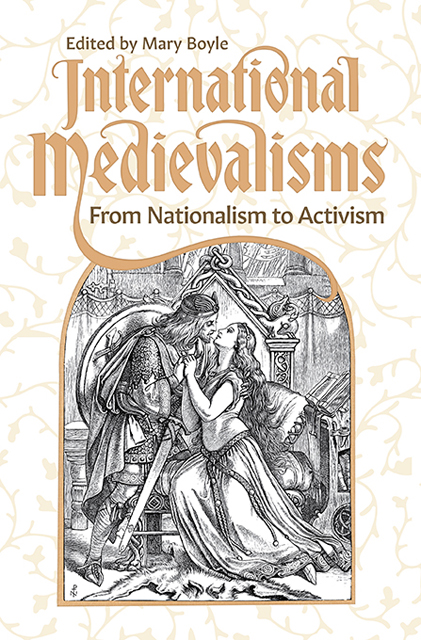1 - Making up the Middle Ages: Roman Scotland and Medievalism in the Eighteenth Century
Published online by Cambridge University Press: 09 June 2023
Summary
In 1757, the Englishman Charles Bertram, living in Copenhagen, published a book with the slightly unwieldy title Britannicarum Gentium Historiæ Antiquæ Scriptores tres: Ricardus Corinensis, Gildas Badonicus, Nennius Banchorensis. It comprised three histories of Britain: Gildas's De Excidio et Conquestu Britanniae from the sixth century; Nennius's Historia Brittonum from the ninth; and Richard of Cirencester's De Situ Britanniae, presumed to be from the fourteenth century. The book also included a copy of a map supposedly found with Richard of Cirences¬ter's text. This text, and particularly the map, showed a previously unknown Ro¬man province, Vespasiana, that covered large parts of Scotland, as well as roads and stations extending into this area. In this image, Roman Britain extended as far as Inverness and Fort William, far north of the Antonine wall. Both text and map were, of course, forgeries. It is doubtful that this text would have had as much impact on historiography had it not been sponsored by Dr William Stukeley, who introduced the text at the Society of Antiquaries of London in 1757, the year he published his own commentary on it as well. Due to Stukeley's patronage, the text was widely read by antiquarians and historians. The rest, as they say, is pseudo-history.
In this essay, I will focus on the two transnational aspects of this forgery of a medieval manuscript. First, the text relates the position of the writer in exile, forging a past for a nation in which he no longer dwells. As a member of a diaspora, Bertram appears to find that ‘the nation fills the void left in the uprooting of communities and kin’, and this likely determines his interest in British history. Secondly, the text misuses a ‘medieval’ text in order to promote a political agenda concerning national borders. It treats the Middle Ages as a repository for information on such borders, including the pre-medieval history of eighteenth-century nations. As we shall see, the forgery allows for a number of attractive rewritings of history, including the eliding of the Middle Ages themselves.
The forged text is first mentioned in a letter from Bertram to Stukeley, written in the second half of 1747. It was eventually sent to Stukeley as a small sample copy of the handwriting, and a transcription of the manuscript, to which Bertram claims to have limited access. The text is divided into two books subdivided into chapters.
- Type
- Chapter
- Information
- International MedievalismsFrom Nationalism to Activism, pp. 19 - 32Publisher: Boydell & BrewerPrint publication year: 2023



